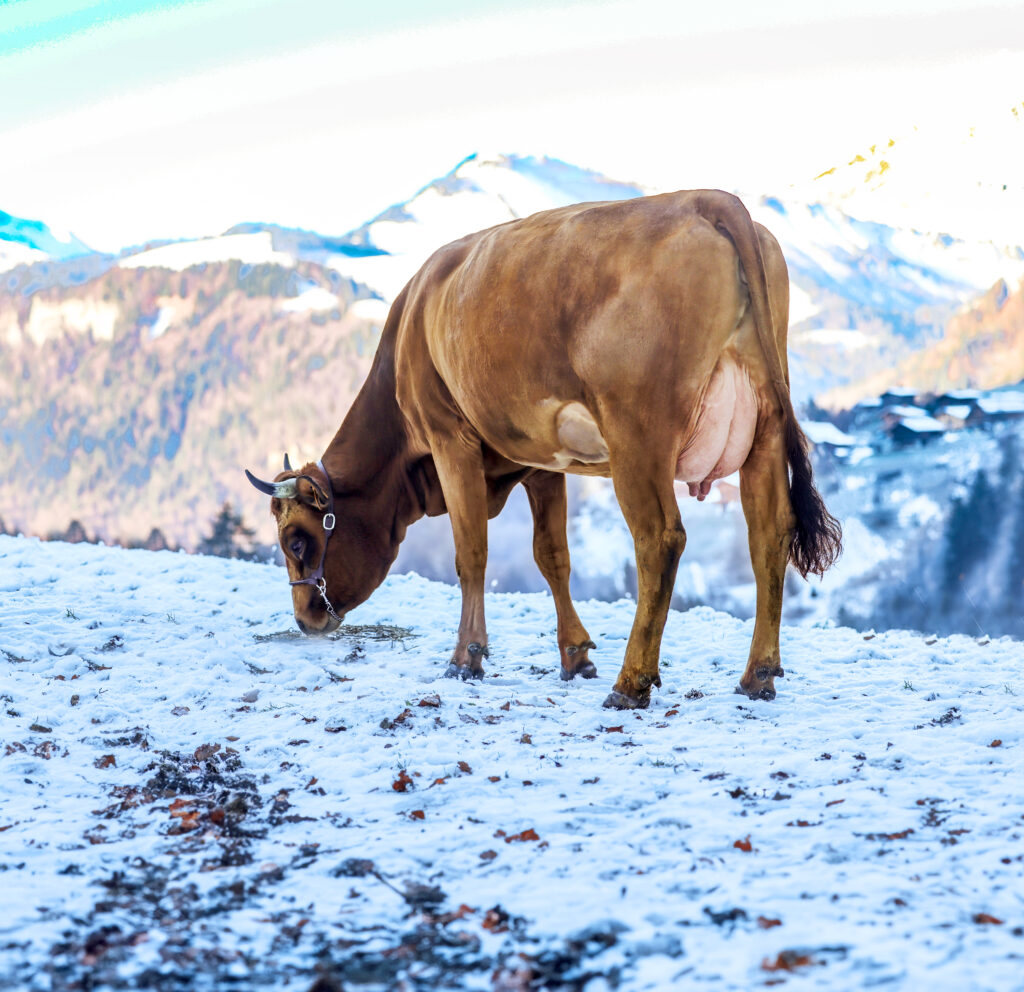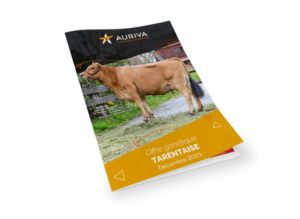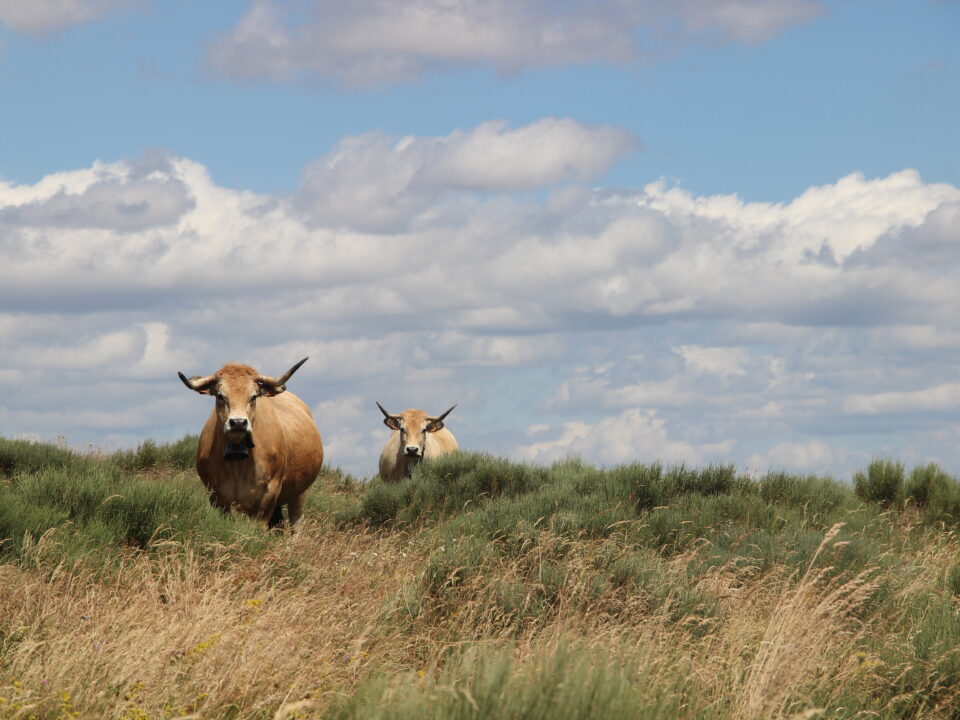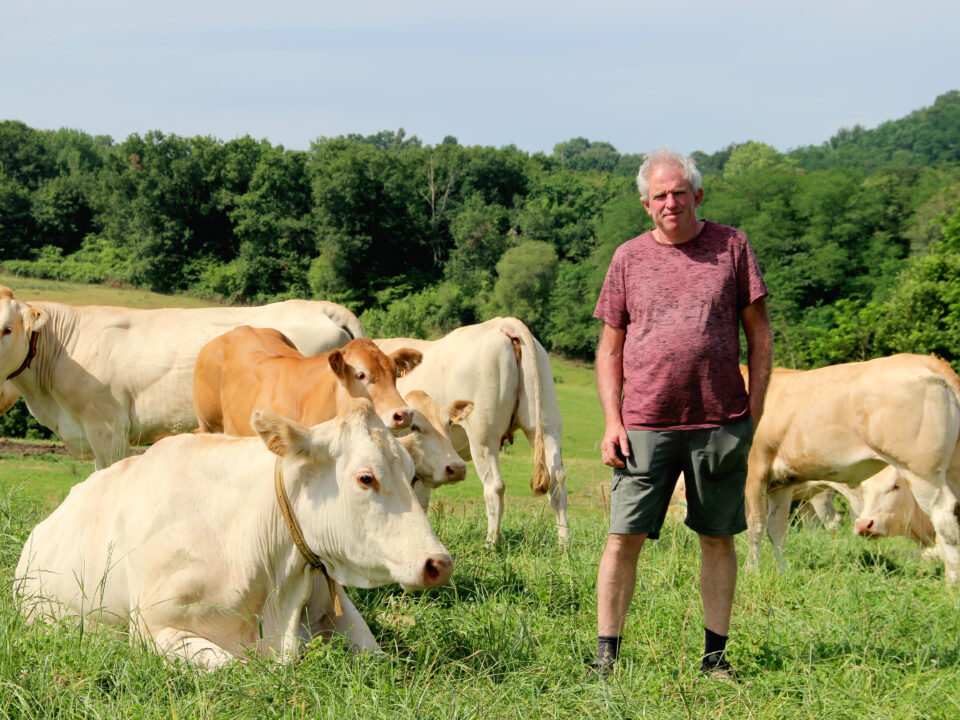
Strategic and Genomic Visit: The 7-year milestone
30 January 2024
EARL GURE ARTEAN: combining tradition and modernity
20 February 2024Controlling inbreeding, a major challenge for continued progress
Variability management is an essential issue for breeds with small populations that are unable to source from third countries. If the selection system were not careful to increase the number of origins and the value of original pedigrees, this would lead to a multiplication of genetic anomalies and, in the long term, the impossibility of working with purebreds.
Thanks in particular to the non-disclosure of indexes, which enables us to avoid over-utilizing the best ISUs, and by using mating tools that take into account the parentage rate of the planned pairs, we are able to avoid increasing the average inbreeding rate of the population. What’s more, we work with the installation companies to evenly distribute the doses of each bull marketed, to ensure fair use.
In this brochure, we offer you 3 “outside” perspectives on the analysis of the inbreeding coefficient in the Tarine breed: a European study, a national study and a focus on the subject in the Montbéliarde breed.
1. LOOK NOT ONLY AT INBREEDING
RUMIGEN, a European study that assesses the impact of genomic selection in “small populations”, makes two observations:
► 1st observation: the fact that we have an increasingly genotyped population gives us great precision in our knowledge of genes, especially for inherited ones that could have a common origin.
► 2nd observation : the genetic gain brought about by genomics has reduced the generation interval. This accentuates what is known as pre-selection bias: the best-known strains are often the most indexed and therefore the most sought-after.
The RUMIGEN study also informs us that the inbreeding rate since 2015 has tended to increase (by +0.77). It remains acceptable, however, since we have also gained in pedigree analysis precision. So, without relaxing our focus on inbreeding, we have other tools to assess its scope.
2. CONTROL VARIABILITY TO STAY ON COURSE
Every year, the French livestock institute (IDELE) works and communicates with the VARUM study on a list of indicators for each breed, including information on genomic variability.
In terms of inbreeding coefficients, we know that today’s average products are 4.3% related, i.e. Tarine cows have 4.3% of their genetic heritage in common. For reference, we
speaks of 6.25% consanguineous individuals (corresponding to 1 common grandparent).
This inbreeding coefficient is the same (4.3%) as that of the previous generation. It’s not going up, but it’s not going down either, which leads us to conclude that our methods for controlling inbreeding can be improved, and that we need to keep up the momentum on this subject.
In the Tarentaise breed, we are now able to identify 7.8 generations for the “average” female. With the democratization of genotyping, we also know much more about the latest generations from which individuals are descended. The more we know about generations, the greater the temptation to select only certain particularly interesting strains, thus creating a greater risk of inbreeding, hence the need to work particularly hard on variability.
Probability of gene identity
| Nombre de générations connues | 7.8 |
|---|---|
| Consanguinité moyenne (%) | 4.3 |
| Consanguinité sur 3 générations (%) | 0.19 |
| Parenté (%) | 5.7 |
| Consanguinité des parents (%) | 3.5 |
| Parenté des parents (%) | 4.3 |
| Source : Idele 2022 |
3. THE EXAMPLE OF THE MONTBÉLIARDE, A BREED FOR A LARGER WORKFORCE BY GUILLAUME FAYOLLE, MANAGER THE UMOTEST GENETIC PROGRAM
Genomic data is now available in very large quantities, but apart from its use to better predict the genetic potential of individuals (genomic indexes), the other information it contains, in particular the status of major genes or the allelic variability observed, is still little exploited. INRAE has produced software for calculating relationships directly from individual genotypes. This is far more accurate than pedigree-based calculations, which are highly dependent on the quality and depth of the pedigrees. In partnership with Umotest, GenEval has designed a brand new service for calculating genomic relationships between pairs of genotyped animals. Opening in June 2019, it has been accessible to all breeds since 2020.
Genomic relationship is the relationship calculated by reading the genome of the 2 individuals directly. You don’t have to worry about the quality and depth of the pedigrees. Genomic parentage is a better predictor of inbreeding in unborn offspring. For example, 2 full sisters (same pedigrees) bred to a bull :
| Accouplés au | Parenté | Pleine soeur 1 | Pleine soeur 2 |
|---|---|---|---|
| Taureau A | pédigrée | 6,25% | 6,25% |
| génomique | 7,34% | 6,11% |
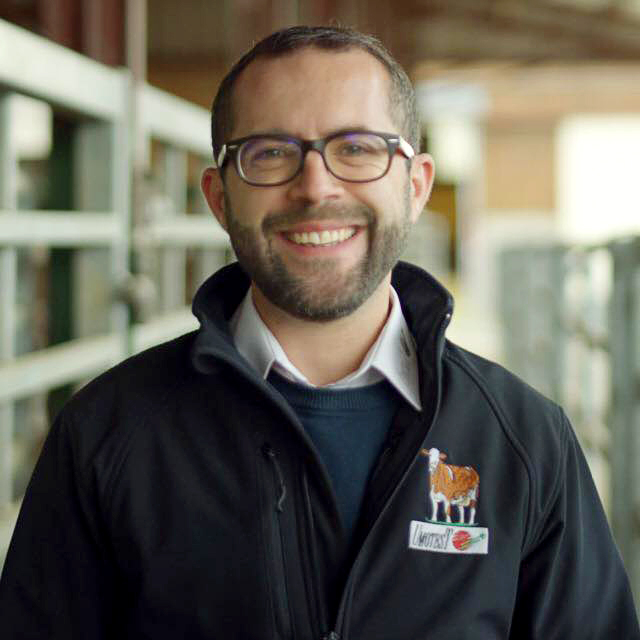
The matching value between each male and each female is also more precise. In fact, genomic kinship makes it possible to determine relatedness directly from the genome of the two individuals. Pedigree kinship is based on genealogical relationships between individuals. With pedigree kinship, whatever the individual, if the father and mother were in common, inbreeding was identical for the descendants.
Mating tools combining ISU or personalized objectives, management of genes of interest or anomalies to avoid
risk mating can save up to 25% in economic efficiency (MO3’s GENO3.0 work, with INRA and UMT eBIS (Allice and Institut de l’Elevage) involving Umotest, ECEL du Doubs et Territoire de Belfort, ECEL de Haute-Saône and FIDOCL: thesis by Bérodier M.)
All these parameters are now integrated into Umotest services via the calculation engine that feeds genomic parentage and anomaly management data (pANO) to local mating tools (PAM or Generations).
HOW DOES THE AURIVA BREEDING PROGRAM CONTROL INBREEDING?
A closer look at the method and processes applied
- Release of 18/20 genomic bulls every year
- Renewal of confirmed employees subject to having made less than 5% of IATs
- Non-disclosure of genomic indexes (to avoid star system)
- Selection based on both ISUo and ISU
- Attention paid to the number of sons per sire (to diversify origins as much as possible).
- Use of VARGEN in mating of schematic females
- Only females that have been genotyped are included in the scheme.
- Selection by intra-sire ranks: identification of genotyped females in the TOP 15% (working with the best daughters from as many different sires as possible).
